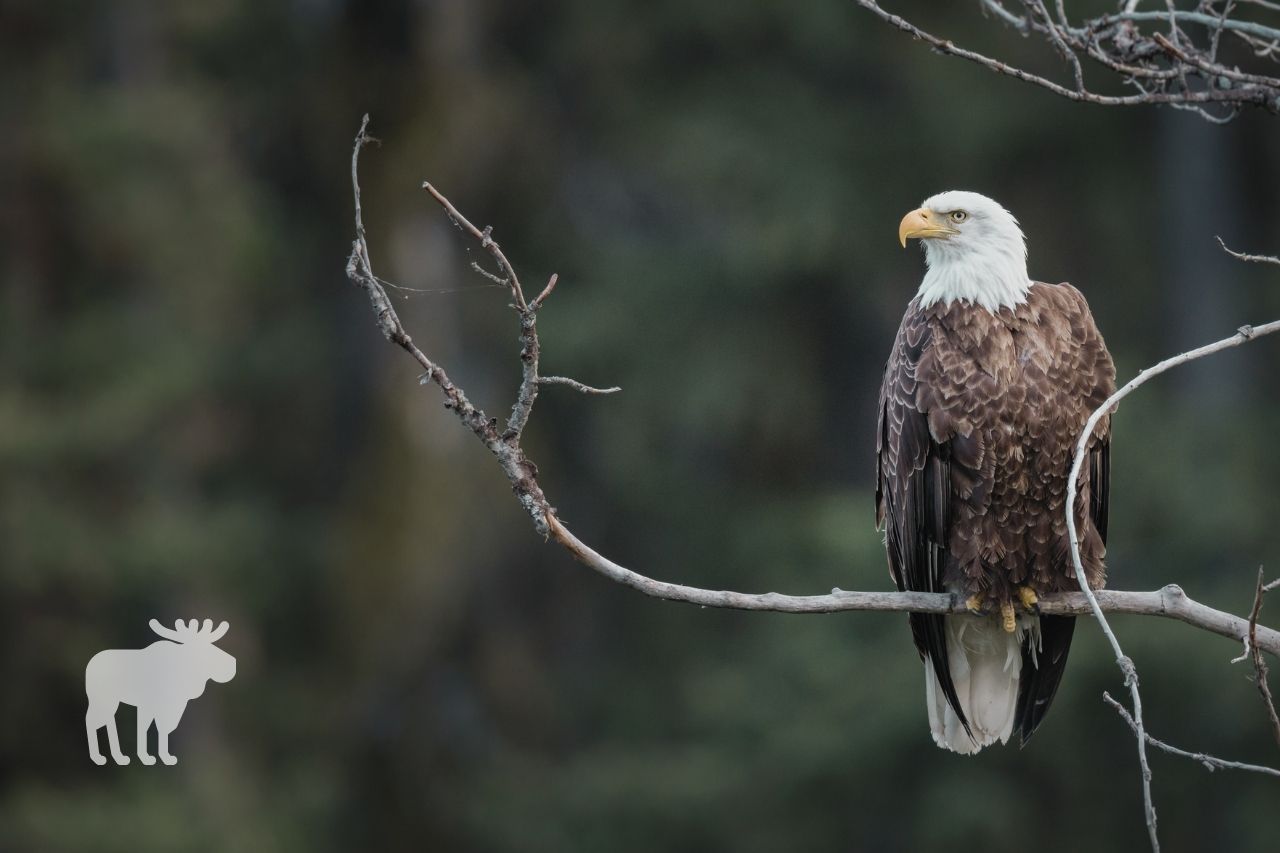There are many different eagle species in the world, and they all produce slightly different sounds. For the purpose of this article, we’re going to focus on birds that sound like bald eagles, which have a much more high-pitched, musical sound than you might expect. Keep reading to learn more about other birds that make similar sounds.
What You'll Learn Today
The Bald Eagle’s Call

First off, for comparison, let’s talk about the sound a bald eagle makes.
It is generally a high-pitched, friendly sort of chirping sound, something like kleek-kik-kik-kik. Some people refer to the sound as a scree or squee noise.
Have a listen below:
1. Woodpecker
Woodpeckers are found on every continent except Antarctica and Australia. There are about 180 species of these birds scattered throughout the world.
With so many species, it’s safe to say that not all of them produce the same calls and songs. But there are a few species that do sound similar to eagles.
The pileated woodpecker is one of the most recognizable woodpecker species, with a prominent red ground on its head. This bird produces a lower-pitched call than the bald eagle, and the specific syllables are more consistent–but the kik-kik-kik pattern is similar.
Check out a pileated woodpecker’s call below:
Another type of woodpecker, the red-bellied woodpecker, also sounds similar to a bald eagle. The sound is more of a trill than a chirp, but the higher-pitched tone is what makes it sound somewhat like an eagle.
Have a listen to the red-bellied woodpecker in this video:
2. Red-Tailed Hawk
Red-tailed hawks are widespread throughout much of North America. These birds have an interesting association with the bald eagle.
If you’ve ever heard a bald eagle on a movie or TV show, there’s a good chance that you actually heard a red-tailed hawk. That’s because moviemakers usually dub a red-tail’s fierce, screeching call over the bald-eagle’s more mild-mannered song.
So, many people think these hawks sound like bald eagles simply because of this association.
In reality, red-tailed hawks produce a much different call than bald eagles, but it sounds like the sort of noise an eagle would make.
The pattern is a single long, screechy chirrrr, and it’s much less chirpy than the sound bald eagles make. Despite this difference in pattern and quality, the high-pitched tone is somewhat similar.
Check out the red-tailed hawk’s call:
3. Goldfinch
There are a few goldfinch species found in North and South America. The most common is the American goldfinch.
You may be surprised to learn that the mighty bald eagle and the tiny yellow goldfinch produce very similar sounds. The tone is nearly identical between the two species, as is the chirp-chirp-chirp pattern.
Not unexpectedly, the call sounds a bit stronger and more commanding coming from the eagle. What’s more, the quality of the sound is slightly more screechy when the goldfinch produces it.
Listen to the goldfinch’s song here:
4. Blue Jay
Blue jays are found throughout much of central and eastern North America. They are an interesting addition to this list thanks to their tendency to mimic other birds.
Specifically, blue jays are known for mimicking various raptors and birds of prey–including bald eagles. They will do this if they or their nests are in danger as a way to scare off potential predators.
This mimicking call will be a bit more raspy than the sound a bald eagle makes; it will also be less high-pitched. That said, the pattern is strikingly similar.
Have a listen below:
5. Gull
Gulls are found worldwide, primarily in coastal areas. They are found on every continent in the world and are even known to breed in parts of Antarctica.
Gulls can make many different sounds. Most of them are quite different from the sounds bald eagles make, though a few of them are quite similar in tone and pattern.
Even those that sound similar are typically more low-pitched. Then again, it depends on the specific species of gull.
For an example, listen to the sounds of seagulls below:
Seagulls sound somewhat similar to bald eagles, but herring gulls produce an even more convincing mimicry. Have a listen below:
6. Song Sparrow
Song sparrows are found throughout much of North America and, rarely, parts of Europe. They are one of the most recognizable and widespread species of sparrow.
While all sparrows produce high-pitched chirping sounds that are similar to bald eagles, the song sparrow’s call is perhaps the most similar.
The tone and quality of a song sparrow’s chirps make it sound quite similar to a bald eagle. However, a song sparrow’s pattern is much more varied and sing-songy than a bald eagle’s.
What’s more, an eagle’s call will be much louder, stronger, and more piercing.
Listen to a song sparrow’s call below:
7. Starling
Starlings are found throughout much of the world, though they are native to Europe, Asia, and Africa.
These birds can produce many different high-pitched calls. They may sound like chirps, squeals, and even long, single whistles.
The high-pitched tone and quality of some of these sounds is strikingly similar to the sounds of a bald eagle. The patterns may be slightly different, but even those are fairly indistinguishable at times.
Listen to the many sounds of the starling below:
8. Scarlet Tanager
The scarlet tanager is a migrating songbird found in parts of North and South America. Males of this species are easily identified by their bright red bodies and black wings (females are a more muted yellow and gray).
These birds produce a high-pitched, trilling chirp that is somewhat similar to the chirping noises a bald eagle emits.
Listen to the sound below:
Conclusion
As you can see, there are several birds that sound like bald eagles. Some of these include the blue jay, the goldfinch, the starling, and the herring gull.